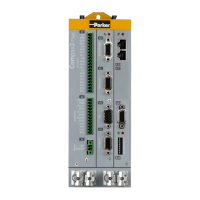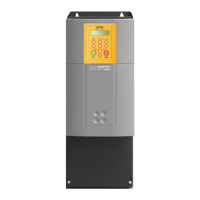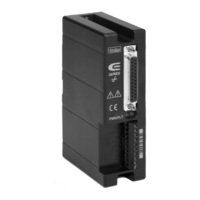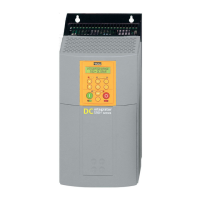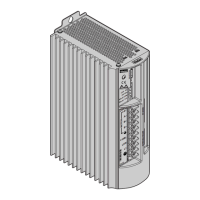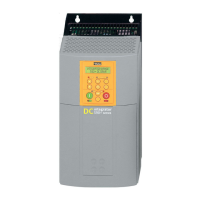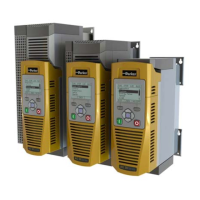Setting up Compax3 C3I22T11
174 192-120114 N5 C3I22T11 June 2008
Explanation:
The motor is controlled by the servo drive with control voltage U. During motion of
the motor, an internal back e.m.f U
EMC
is induced. This antagonizes the control vol-
tage and is therefore deduced in the motor model. The difference is available for
the acceleration of the motor.
The first order delay component represents the delaying property of the motor win-
ding with the time constant T=L/R. According to Ohm's Law, a current I=U/R re-
sults.
The drive torque of the motor is calculated by multiplying the current with the motor
torque constant K
T
. This is antagonized by the load torque of the machine.
The remaining acceleration torque accelerates the motor.
The resulting acceleration depends on the total mass moment of inertia (= motor +
load moment of inertia).
The integration of the acceleration (sum of the acceleration over time) results in the
velocity of the motor, which influences the amplitude of the induced EMC voltage.
Motor parameters relevant for the control
All motor parameters relevant for the control quality will be explained below.
Wizard guided entry of the motor parameters in the MotorManager.
Electromotoric countercheck EMC
A non-energized synchronous motor iduces an induction voltage, the so-called
EMC voltage during an armature movement.
The EMC constant (motor EMC) states the value of the induced voltage subject to
velocity.
The EMC constant corresponds to the motor torque constant K
T
, which represents
the correlation between the torque-producing current and the drive torque, however
in a different unit.
The EMC voltage antagonizes the control voltage of the servo drive.
As the control voltage of the drive is not unlimited, it must be taken into considera-
tion that the drive may approach the voltage limit at high velocities and therefore
high EMC voltages.
The EMC constant is important with respect to the velocity control design.
The motor EMC is entered in the "motor characteristics" wizard window of the Mo-
torManager. You may choose between different units. Please note the information
on the motor type specification plate.
Mass inertia
The mass moment of inertia (moment of inertia) is also an important motor parame-
ter for the design of the velocity control loop. For the velocity control design, this
parameter is effective in correlation with the external mass moment of inertia of the
load. The external load is entered in the C3 ServoManager. With the "load identifi-
cation" function of the C3 ServoManager, the mass inertia can be determined, if it
is not yet known.
Nominal point data
In this chapter you can read about:
Motor characteristic line of a synchronous servo motor (torque via velocity) .................. 175
Calculation of the reference current from the cha
racteristic line...................................... 175
The nominal point data can be found in the velocity characteristic line of the motor.
the prespecified nominal point can be changed in the 2nd wizard page of the C3
ServoManager configuration with the aid of "activate change of reference point" via
the reference velocity and the reference current.
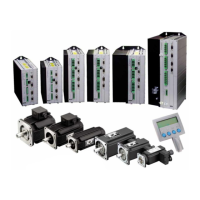
